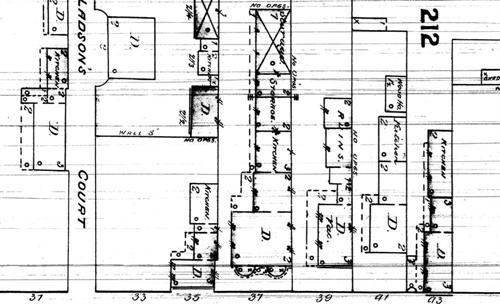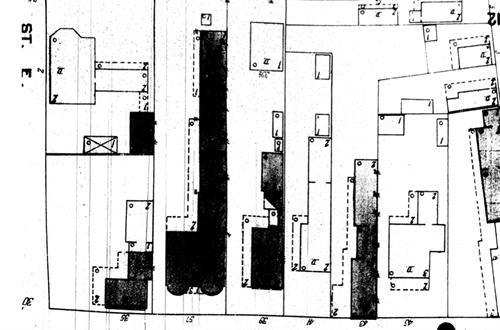| WilliamBull II |
Acting Governor April 1760 – December 1761
Acting Governor May 1764 – June 1766
Acting Governor May 1768 – October 1768
Acting Governor July 1769 – September 1771
Acting Governor March 1773 – June 1775
William Bull II was born in 1710 at Ashley Hall plantation, the home of his parents, William Bull and Mary Quintyne Bull. The first native-born American to earn a university medical degree, Bull studied in England, then at Leiden University (the Netherlands), where he was awarded the medical degree in 1734. Like many later planters, he did not establish a medical practice, but found the training useful to his management of a large population of slaves.
William Bull II was first elected to the Commons House of Assembly in 1736, the year before his father became acting governor. He served in the assembly, representing four different parishes, until his appointment to the Royal Council in 1749. In 1759, he became president of the council and lieutenant governor. As lieutenant governor, William Bull II was acting governor on five separate occasions, holding the office a total of eight years.
First, in April 1760 governor William Henry Lyttelton left South Carolina, leaving Bull the acting governor. Bull began negotiations to end the Cherokee War, and in 1761 the tribe signed a treaty with him at Ashley Hall. In December 1761, governor Thomas Boone took over the administration.
William Bull again became acting governor in May 1764, when Thomas Boone left the colony. He stepped down when governor Charles Greville Montagu arrived in Charleston in June 1766, acted as governor during Montagu’s absence in the summer of 1768, and again from July 1769 until September 1771, while Montagu was in England.
William Bull’s fifth term as acting governor began in March 1773, when governor Montagu sailed for England, resigning soon afterward. Bull held the position until Lord William Campbell, South Carolina’s last royal governor, arrived on June 18, 1775.
In 1777, William Bull II refused to take the oath of allegiance to the revolutionary government, and left for England. He came home in February 1781, during the British occupation of Charleston, and was entrusted with the office of “intendant general” on the Board of Police, the body that governed the occupied city. When the British finally evacuated in December 1782, Bull went back to England permanently.
William Bull died in London in 1791. He had recovered ownership of most of his property in South Carolina, and having no children, he bequeathed Ashley Hall Plantation to his nephew William Bull.
Bull, Henry DeSaussure. “Ashley Hall Plantation.” South Carolina Historical Magazine. Vol. 53 (1952).
Moore, Alexander. “Bull, William, II.” Walter Edgar, ed. South Carolina Encyclopedia. University of South Carolina Press, 2006.
Salley, A. S. “The Bull Family of South Carolina.” South Carolina Historical and Genealogical Magazine. Vol. 1 (1900).
 AshleyHallOaks_500x500.jpg) |
Prints and Photographs Collection, Library of Congress http://www.loc.gov/pictures Ca. 1900 postcard view of the oak avenue at Ashley Hall. William Bull II inherited his father’s plantation, and laid out an elegant garden “in the Italian style” in about 1770.
|
 Bull1825_500x500.jpg) |
Mills Atlas, Charleston District, 1825. American Memory, Library of Congress http://memory.loc.gov/ William Bull’s fine brick house, built about 1704 and enlarged ca. 1810, was standing when Robert Mills published his Atlas in 1825. However, it was the grand monument to William Bull II that Mills showed on the map.
|
 BullMonument_500x500.jpg) |
Prints and Photographs Collection, Library of Congress http://www.loc.gov/pictures “A steady Friend, an affectionate Husband…. On this land, part of his Estate and the place of his Birth, this obelisk was erected, sacred to his virtues and her grief, with duty and affection by his disconsolate widow.” Memorial to William Bull, placed at Ashley Hall by Hannah Beale Bull, 1792.
|
 BullHouse1788_500x500.jpg) |
Edmund Petrie, Ichnography of Charleston, South Carolina. London, Phoenix Fire Company, 1788. American Memory, Library of Congress http://memory.loc.gov/ Loyalist William Bull II returned to England in December, 1782, when the British evacuated Charleston. He conveyed his Meeting Street home to Thomas Drayton, who sold it as “68 Meeting Street” in 1783.
|
 |
Sanborn Map Company Bull House, 35 Meeting Street, 1888.
|
 |
Sanborn Map Company
Bull House, 35 Meeting Street, 1902, showing piazzas added ca. 1896.
|
 |
Preservation Society of Charleston 35 Meeting Street, William Bull’s Charleston residence, was built by his father ca. 1720, and enlarged in 1896 by Henry H. Ficken.
|